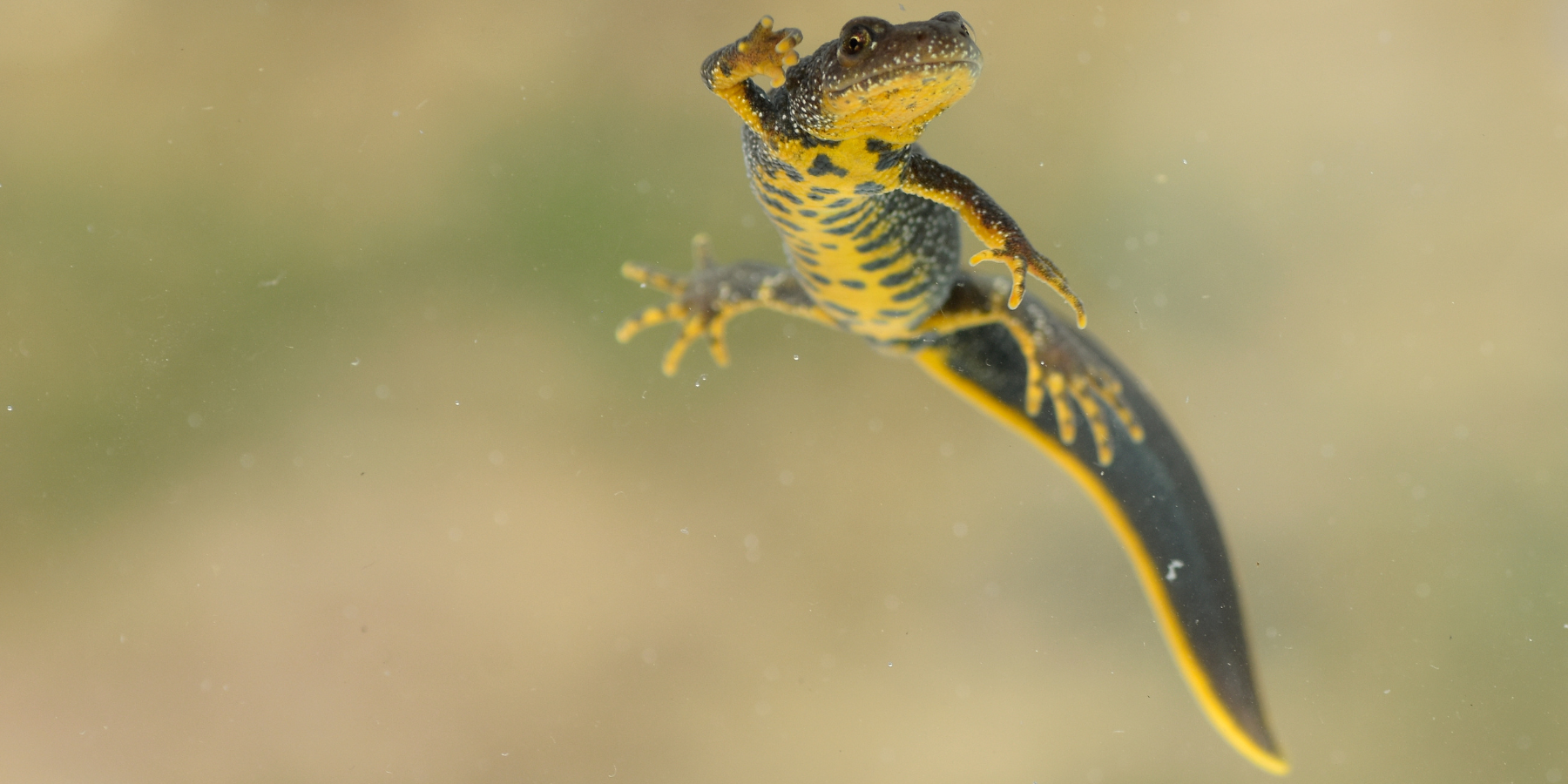As the newly appointed Pond Officer and member of the Bentley Wildlife Group, I’m thrilled to share insights about the fascinating Great Crested Newt population in Bentley Pond. This protected species elevates the importance of our local pond, designated as a Site of Importance for Nature Conservation (SINC). We should be proud to have such a special habitat within our community.
Great Crested Newts, Triturus cristatus, are a protected species, making Bentley Pond a significant site for local biodiversity. The pond’s designation as a SINC underscores its value, not just for our village, but for the broader ecological community. As someone new to the role of Pond Officer, I have been delving into the management of habitats for these newts and the recent history of our pond.
Why Are Great Crested Newts Protected?
Great Crested Newts are legally protected due to their declining numbers across Europe. Their habitats, including ponds and surrounding terrestrial areas, are crucial for their lifecycle. These newts rely on clean, well-vegetated ponds for breeding, and their presence indicates a healthy ecosystem. Protecting these habitats ensures the survival of not only the newts but also many other wildlife species.
As our largest newt, adults can grow up to 17 cm in length, their impressive size and distinctive features make them relatively easy to identify compared to other newt species in the UK, such as the Smooth Newt and the Palmate Newt, which are smaller and have smoother skin.
They get their name from male newts, who develop a prominent, jagged crest along their back and tail during the breeding season. Here are a few more interesting facts about these newts:
- Appearance: Great Crested Newts are easily recognisable by their warty skin, bright orange bellies with black spots, and the males’ impressive jagged crest.
- Lifecycle: They start migrating to ponds, from their foraging grounds, early in the year sometimes as early as January. With breeding occurring mainly from March to June, with females laying eggs individually on submerged vegetation. After the breeding season, they spend most of their time on land.
- Leaf wrapping: Females lay around 200 – 300 eggs individually, rather than in clusters like frogs and toads. The female carefully selects a suitable leaf, favouring plants like water mint. She then uses her hind legs to fold the leaf around a single egg, securing it in place. This process provides additional protection for the developing embryo.
- Diet: Great Crested Newts are carnivorous, feeding on invertebrates, tadpoles, and even other newts. Ecologists often find newts with missing toes or tips to their tail because someone has fancied a snack!
- Longevity: These newts can live up to 15 years in the wild, though many do not reach this age due to predation and habitat loss.
As a protected species, it is illegal to capture, kill, disturb or injure Great Crested Newts deliberately. You cannot damage or destroy a breeding or resting place either, or obstruct access to these places deliberately, or by not taking enough care.
Therefore to survey a site like Bentley Pond, we must work with an ecologist or an organisation like the Hampshire and Isle of Wight Amphibian and Reptile Group (HIWARG) who hold the appropriate licence and have experience in safely surveying these amphibians.
Bentley Pond Findings
To this end, last week I attended a survey training session at the pond with HIWARG. This initial training is the first step towards implementing a regular survey program from late January to June. These surveys will help us monitor the Great Crested Newt population and other species, providing critical data to inform our pond management strategy.
Over the past decade, several surveys have been conducted on Bentley Pond and its surroundings, Carters Meadow. Here are some key points from those surveys:
- 2014: The Hampshire Biodiversity Information Centre found no Great Crested Newts due to extensive duckweed coverage, noting the pond was “not in optimum condition for great crested newts or other wildlife. However, the survey was conducted in August when most newts would be foraging in the surrounding area, not in the pond itself.
- 2018: A survey commissioned by Bentley Parish Council reported “good terrestrial habitat for great crested newts” in Carters Meadow, and noted a record of a small breeding population from 2015. However, the pond itself was deemed of poor suitability for newts.
- 2019: Bentley Parish Council agreed that enhancement works should be carried out and a further survey in April found a medium-sized population of Great Crested Newts (peak count of 15), leading to dredging and habitat enhancement work in the winter of 2019.
- 2020: A May survey recorded a peak count of three Great Crested Newts, but the pond’s Habitat Suitability Index (HSI) improved from 0.77 (Good suitability) to 0.83 (Excellent suitability), indicating the maintenance had positively impacted the newt habitat.
During our recent survey training, we discovered some Great Crested Newt larvae and an adult female estimated to be around eight years old. Additionally, we found larvae of other species, likely smooth or palmate newts.
We also detected a small population of non-native water frogs, which HIWARG monitors across Hampshire. These frogs call loudly during the day, distinguishing them from our native common frogs and were first reported, in this area, in Rowledge 20 years ago. Since then they have spread throughout Alice Holt Forest and arrived in Bentley Pond in the last couple of years.
If you do hear them, it’s unlikely you’ll see them because they are very secretive, please log your sightings on www.recordpool.org.uk
Next Steps
As we move into the summer, our Bentley Pond population of adult Great Crested Newts are now leaving the pond to return to their foraging grounds, Carters Meadow. While some may remain, sometimes until as late as October, it’s not the optimal time to survey and the duckweed on the pond makes this challenging anyway.
In the winter months, November and December, I plan to work with HIWARG to remove any litter from the pond and identify any maintenance that needs to be completed whilst the newts are not present. However, we do have to be careful, because of their protected status if we do spot a Great Crested Newt we’ll have to down tools and potentially get specialist support to continue.
In the new year, 2025, my plan is to implement regular monthly surveying so we can build a picture of our newt population, as well as other species, and monitor the health of the pond. Working with HIWARG and other organisations we’ll also identify opportunities to further improve the habitat and help ensure the survival of these remarkable amphibians.

